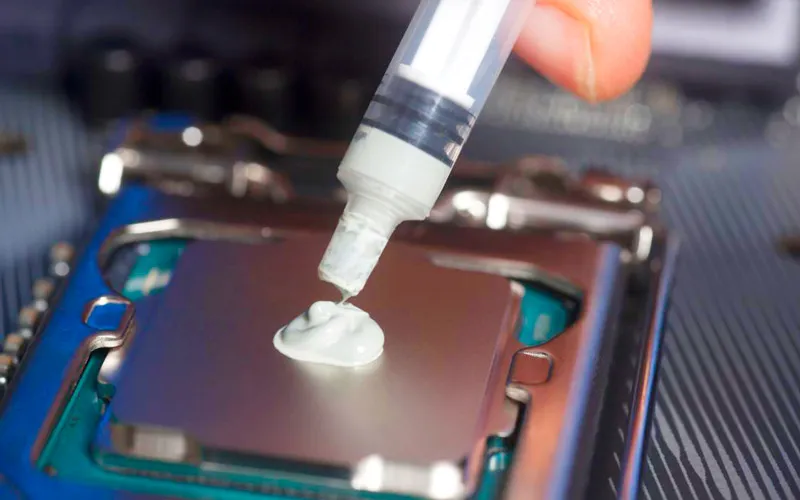Computers Is Applying Cpu Premium Thermal Paste Worth It?
- Posted on:2023-02-24 15:52:00
- Source:AOK Thermal Pad Manufacturer FAQs
Yes, applying CPU premium thermal paste is worth it. Thermal paste helps to improve the heat transfer between the CPU and the heatsink, which can help to reduce the temperature of the CPU and improve its performance. Thermal paste is a vital cog in PC build that is sometimes overlooked. however, it is one of the most vital requirements for keeping your CPU cool and running properly.
The thermal paste fills seemingly minor flaws and air bubbles between the CPU and the cooler or heatsink. Air bubbles can easily form during construction and prevent the CPU from cooling correctly and this can in turn harm the hardware. This potentially long-term and irreversible damage to expensive equipment makes it critical that PC builders use a high-quality thermal paste to avoid damage and performance issues.
Thermal paste, also known as thermal compound or thermal grease usually has some sort of metallic or ceramic compound that gives it the qualities that make it so functional. Thermal paste is a heat conductor. Plugging any air gaps allows the smooth transferral of heat from a CPU to a heatsink without impacting performance or causing the hardware to work overtime to try and maintain a suitable temperature.
Using a premium thermal paste is absolutely worth it. It’s not a component that needs to be changed too often, although how regularly you change thermal paste depends on your PC use. More demanding PC will put more pressure on the hardware and subsequently increase the base temperature of the CPU.
With lower quality thermal paste, the change will need to be more regular, likely every couple of months to keep the hardware working efficiently. A dried or cracked appearance will indicate that you need to remove old paste and reapply a new one. The drying and degradation under the heat of the CPU is one of the most common reasons for loss of function, and with cheap thermal pastes, this is likely down to the degradation of organic solvent that has evaporated into the air.
Computers are generally designed with ventilation and other heat dispersion options in mind. When you build your own PC, you can add vents or even liquid cooling systems to help keep your system temperature down and your performance up. The CPU is one of the hardest working components of your build and will therefore often have a heatsink or cooling system of its own, need to do is ensure that the heat can efficiently pass between the two.
If you would like to learn more about AOK performance thermal materials, please visit our website at www.aok-technologies.com.


